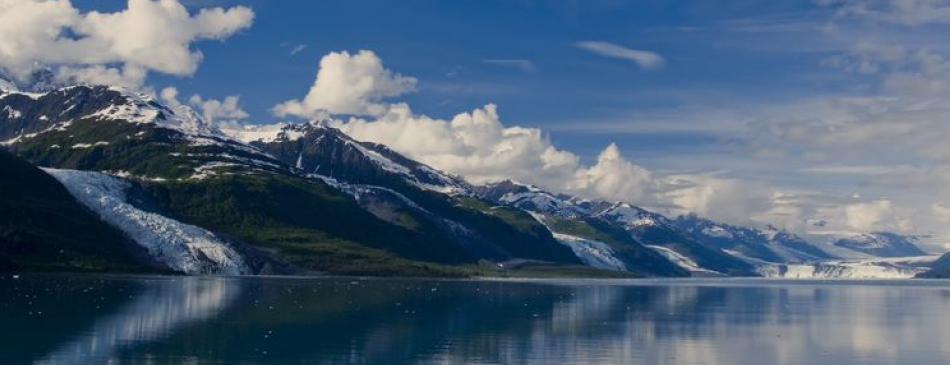|
With a population of 710,231, according to the 2010 U.S. census, Alaska is the 47th most populous and least densely populated state. As of 2005, Alaska has an estimated population of 663,661, which is an increase of 5,906, or 0.9%, from the prior year and an increase of 36,730, or 5.9%, since the year 2000. This includes a natural increase since the last census of 36,590 people (53,132 births minus 16,542 deaths), and an increase due to net migration of 1,181 people into the state. Immigration from outside the United States resulted in a net increase of 5,800 people, and migration within the country produced a net loss of 4,619 people. More than half of the state's population lives in Anchorage, Juneau and Fairbanks, with two-fifths in Anchorage alone.
As of the 2005-2007 American Community Survey conducted by the U.S. Census Bureau, White Americans made up 68.5% of Alaska's population. African Americans made up 0.2% of Alaska's population. American Indians and Alaska Natives made up 13.4% of Alaska's population; they are the largest minority group. Asian Americans made up 2% of Alaska's population. Pacific Islander Americans made up 0.5% of the state's population. Individuals from some other race made up 1.9% of Alaska's population while individuals from two or more races made up 7.2% of the state's population. Hispanics and Latinos (of any race) made up 5.5% of Alaska's population.
For European ancestry, German Americans are the largest single ethnic group in Alaska; they made up 19.3% of Alaska's population and they are the only ethnic group in the state with over 100,000 members. Irish Americans made up 12.5% of Alaska's population while English Americans made up 10.8% of the state's population. Norwegian Americans made up 4.2% of Alaska's population and French Americans made up 3.6% of the state's population.
Other large ethnic groups in the state include Polish Americans, Russian Americans, Serbian Americans (including Montenegrin Americans) and Croatian Americans each form 5-10 percent of the population.[citation needed]The vast and sparsely populated regions of northern and western Alaska are primarily inhabited by Alaska Natives, who are also numerous in the southeast. Anchorage, Fairbanks, and other parts of south-central and southeast Alaska have many White Americans of northern and western European ancestry. The Wrangell-Petersburg area has many residents of Scandinavian ancestry and the Aleutian Islands contain a large Filipino population. The vast majority of the state's African American population lives in Anchorage and Fairbanks. Also, Alaska has the largest percentage of American Indians of any state. Some of the Alaska Natives absorbed the small 1700's Russian-era settlement.
Alaska's indigenous people, who are jointly called Alaska Natives, can be divided into five major groupings: Aleuts, Northern Eskimos (Inupiat), Southern Eskimos (Yuit), Interior Indians (Athabascans) and Southeast Coastal Indians (Tlingit and Haida). These groupings are based on broad cultural and linguistic similarities of peoples living contiguously in different regions of Alaska. They do not represent political or tribal units nor are they the units Native people have traditionally used to define themselves.
According to the 2005-2007 American Community Survey, 84.7% of people over the age of five speak only English at home. About 3.5% speak the Spanish language at home. About 2.2% speak an Indo-European language other than Spanish at home and about 4.3% speak an Asian language at home. And about 5.3% speak other languages at home. A total of 5.2% of Alaskans speak one of the state's 22 indigenous languages, known locally as "native languages". These languages belong to two major language families: Eskimo–Aleut and Na-Dené. As the homeland of these two major language families of North America,
Alaska has been described as the crossroads of the continent, providing evidence for the recent settlement of North America via the Bering land bridge. Originally settled by people who crossed the Bering Land Bridge, Alaska later became populated by Inupiaq, Inuit and Yupik Eskimos, Aleuts, and a variety of Native American groups. Most of the original people of the Americas are thought to have traveled this route from Asia. and then continued farther south. In 1725, Peter the Great of Russia sent Vitus Bering to explore the North Pacific Ocean area. He sailed through what we now call the Bering Strait in 1728. Nearly 50 years later, Juan Perez of Spain and James Cook of England also explored the same area. The first non-native settlement, Nikolaevsk, was constructed on Kodiak Island in 1784. Originally established as a sea otter fur post, it was never profitable because of high transportation costs. |




